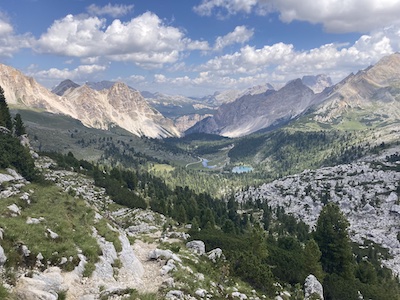Outdoor Sports and Climate Change
01.04.2022
By Dina von Werder
Supervisor: Dr. Gesa Lüdecke

Running trails, hiking scenic ridges & climbing mountains – for many mountain outdoor sport enthusiasts that is how the perfect weekend looks like. But as many fragile ecosystems the mountains are also severely affected by climate change. Glaciers are rapidly receding or have already disappeared, wildlife is struggling with hot and dry summers, and heavy rainfalls change riverbeds.
While some are lucky and can start their hiking tour directly in front of their house, for many a hiking tour does also involve at least an hour of travelling to the starting point of the hike – one way that is. When the Deutsche Alpenverein (DAV) asked its members how they got to the mountains, 70% responded that they travelled by car. This not just leads to congestions, parking problems and noise pollution, but also makes the drive to the mountains the most carbon intensive part of the trip. Luckily, there are alternatives to the car and train lines exist that connect Munich to the mountains. However, at first sight, taking public transit seems to narrow down route and activity options drastically, since not all areas are easily accessible by train or bus.
In my final project, I wanted to highlight that the assumption that public transport limits activity options is only partly true. It turns out, it also opens up completely new opportunities for mountain activities, especially since you do not have to come back to your starting point. To motivate people to use public transport to get to the mountains I planned several hiking, trail running, mountain biking, climbing activities, that can only be reached by public transit. I summarized this helpful information in a blog and hope that it encourages people to make their next mountain activity a more sustainable and car-free one.

